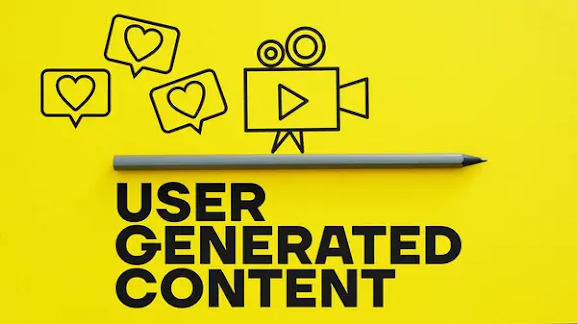Why user generated content branding is widely reliable?
User-generated content material (UGC) enables purchasers sense extra fulfilled since it lets in them to make a contribution to a reason more than themselves. This has a super impact on logo loyalty and attachment.
When it involves an exquisite or
provider, humans create user-generated content material (UGC) instead of the
emblem. User-generated content material (UGC) encompasses a
huge range of material types, such as blog posts, movies, podcasts, social
community updates, and opinions.
Why
does emblem cost come from user-generated content?
After defining user-generated content
(UGC), the subsequent level is to discover why it is essential for modern-day
net manufacturers. Because it originates from an outside supply,
client-generated fabric is influential.
What
are the strengths of user-generated content (UGC)?
|
Significant
Social Proof in the Purchase Process Positive customer experiences from
current customers with a product or service could act as social proof for
prospective new customers. The endorsement of another individual would be a
basic definition of social evidence. Customers rely on user-generated content
(UGC) in the same way that they do on personal or professional networks, unlike
with marketers. Complete
Access Go to the Original, Uncut Media Using user-generated content
demonstrates to consumers that brands are open to having discussions with them
in order to forge closer relationships. One such company is Sugar Factory,
which has gained notoriety as one of America's most Instagram worthy
restaurants as a result. A partner at Sugar Factory explains, Almost every
table can have their digicam out because they see something they suppose is
exquisite. This logo makes use of a visually attractive and very Instagram worthy
ugc
marketing approach to successfully supply clients non-forced motives to
sell them. There are endless approaches to inspire people to create their very
own cloth, and user-generated content material simply outperforms traditional
advertisements. A
Human-Centered Approach Humans have an innate need to belong
to a network. User-generated
content (UGC) creates an inclusive surroundings in which humans come
collectively with shared pastimes, paving the path for this experience of
belonging. This organization's capability to focus on the customer can bring
about phrase-of-mouth advertising and marketing. When human beings rave about
how exquisite a services or products is, it makes them want to buy it truely
even as name for is at its top. People are extra willing to browse web sites,
engage with content cloth, examine manufacturers, and make a purchase when they
experience recommended to achieve this. Why
do companies look for and utilize user-generated content? Finding user-generated content (UGC)
on line normally entails looking hashtags or looking for content material that
mentions or tags your organization. You can initiate campaigns, giveaways, or
competitions with branded hashtags to entice users to put up content material
and arrange it better. More domestically, you can use the captions of your
emblem's postings to sell communication via posing queries. After making sure content security and
adhering to high-quality user generated content branding, agencies
can rent user-generated content material (UGC) online or in-store. One approach
to make your business enterprise greater relatable and earn your customers'
self-assurance is to repost cloth that they have made. Users build a deeper connection to the
organizations they support after they find out user-generated content material
(UGC) on social media. Many organizations regularly adopt the approach of
promoting user-generated content material (UGC) on product pages or all through
the checkout technique. Having others advocate a product or service to you is
some other way you may utilize it for email advertising. |





Comments
Post a Comment